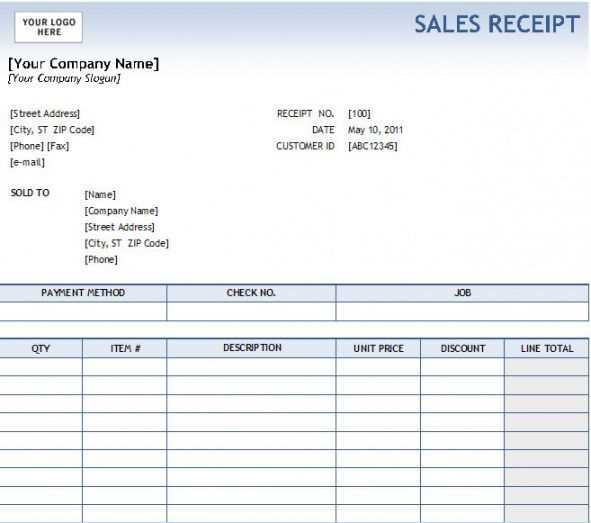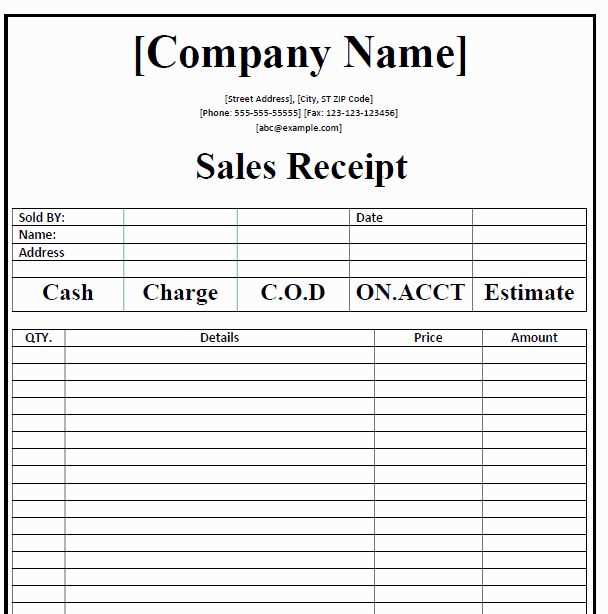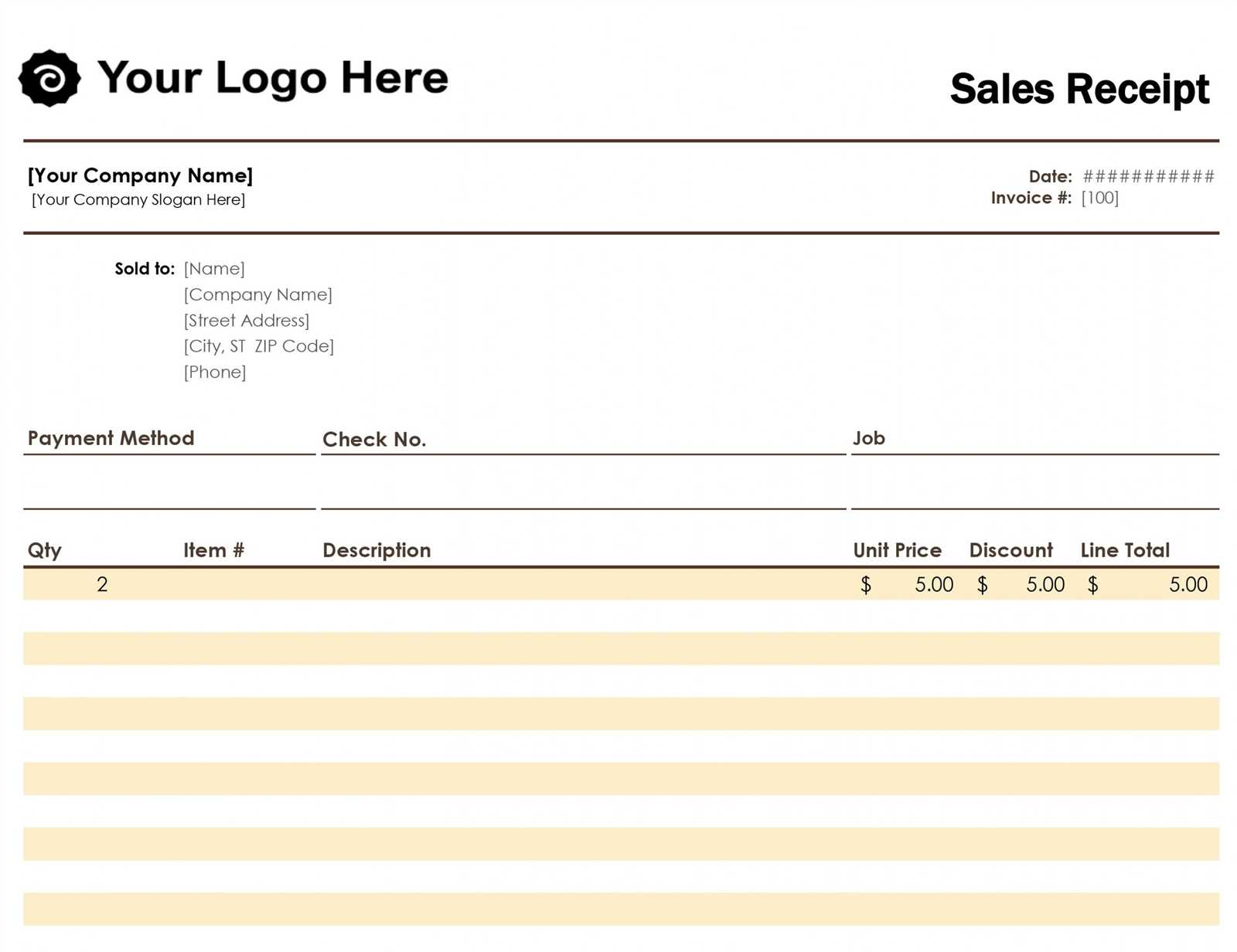
Include clear details on your sales receipt, such as the buyer’s name, address, and contact information, along with the caravan’s make, model, year, and Vehicle Identification Number (VIN). The price agreed upon should be listed prominently, along with any deposit or balance due. Ensure both parties sign and date the receipt to make the transaction legally binding.
Itemized breakdown of the caravan’s features, including any upgrades or accessories, can help clarify the value. Mention if the caravan is sold “as is” to prevent future disputes. If applicable, include warranties or guarantees, and specify the terms clearly to avoid confusion later.
Providing both you and the buyer with a copy of the receipt is recommended for record-keeping and future reference. If possible, include payment method details, such as whether the amount was paid in cash, via bank transfer, or any other form. This can add transparency to the transaction and avoid potential issues down the road.
Sales Receipt Template for Selling a Caravan
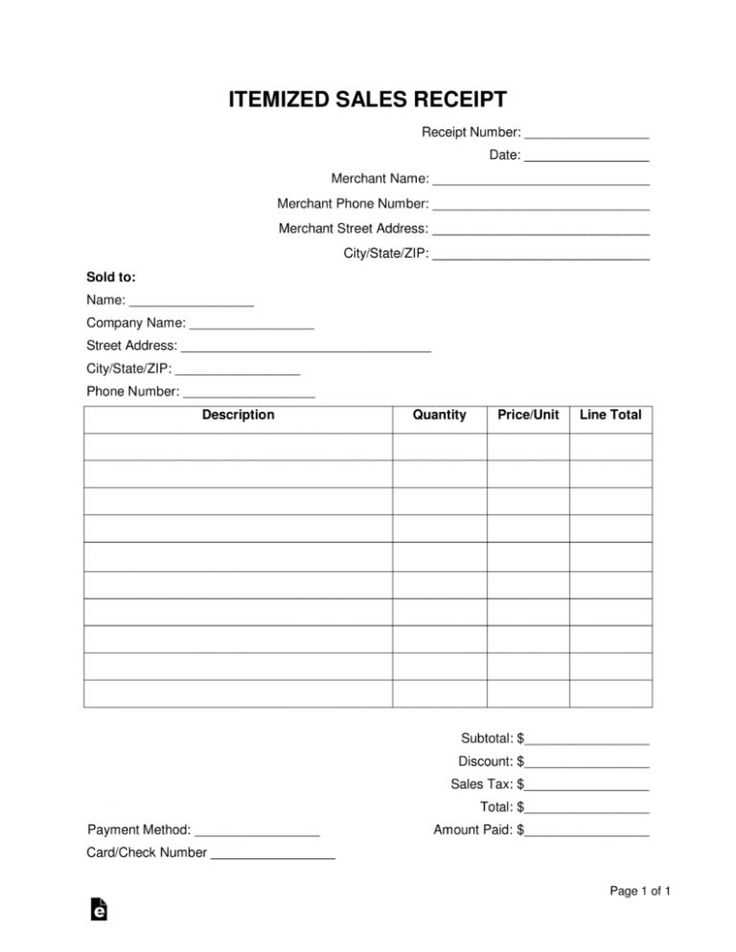
When selling a caravan, a clear and well-structured sales receipt is crucial for both parties. Make sure your receipt includes these key components:
Basic Information
Start with the buyer’s and seller’s names and addresses. Include contact details for both parties, ensuring there’s no ambiguity about who is involved in the transaction.
Transaction Details
List the caravan’s make, model, year, VIN (Vehicle Identification Number), and any distinguishing features. Include the total sale price, the amount paid, and the payment method (cash, bank transfer, etc.). A description of any additional items included in the sale, such as accessories or parts, should also be noted.
Finally, include the date of the transaction and both signatures, confirming that both parties agree to the terms outlined. Keep a copy for your records and provide one to the buyer as well.
Choosing the Right Information to Include on the Sales Receipt
Ensure the sales receipt clearly identifies both the seller and the buyer. Include the full name and contact details of the seller, such as the business name (if applicable), address, and phone number. For the buyer, include their name, address, and phone number. This creates a record of both parties involved in the transaction.
Details of the Transaction
List the caravan’s make, model, year, and VIN (Vehicle Identification Number) to avoid ambiguity. Add the sale price and any applicable taxes. If there were additional charges (e.g., delivery or accessories), include them as separate line items to maintain transparency.
Payment Terms and Conditions
Specify the payment method–whether it was cash, cheque, or electronic transfer–and the date of the transaction. If the buyer paid a deposit, mention the amount and the balance due. Clarify the terms for any warranties or return policies to avoid confusion later on.
How to Specify the Caravan’s Make, Model, and VIN Number
To accurately list the caravan’s make, model, and VIN number on the sales receipt, follow these steps:
- Make: Identify the caravan’s manufacturer, often found on the front of the caravan or in the owner’s manual. It may also be listed in the vehicle’s registration documents.
- Model: The model name or number is typically found on the vehicle’s chassis plate or a label inside the door frame. This should match the model listed in the registration or title documents.
- VIN Number: The VIN (Vehicle Identification Number) is a unique 17-character code assigned to every caravan. It can be located on the chassis plate, inside the driver’s side door frame, or on the dashboard near the windshield. Ensure you record the entire VIN correctly, as it is crucial for identifying the caravan uniquely.
Check all these details twice to ensure accuracy. Errors in the VIN or model information may lead to complications in registration or insurance claims later on.
Incorporating Terms of Sale and Payment Methods
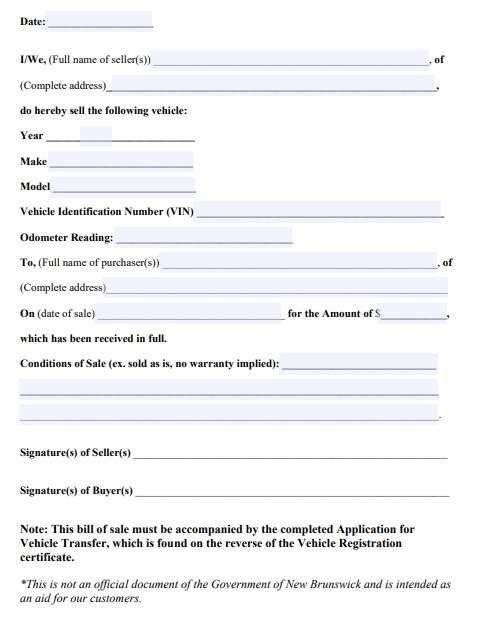
Clearly outline the payment methods accepted for the caravan sale. Specify whether you accept cash, bank transfers, credit card payments, or other payment methods. For instance, you could state: “Payments can be made via bank transfer or credit card. No checks will be accepted.” This reduces confusion and ensures both parties are aligned on the process.
List the terms of sale, detailing any deposit requirements, timelines for full payment, and any penalties for late payments. For example: “A 10% deposit is required upon agreement of sale, with the remaining balance due within 14 days of delivery.” This protects both buyer and seller by setting clear expectations on financial commitments.
If applicable, mention any refund or return policies. Be specific about conditions under which a refund or return is possible, such as: “Refunds will only be issued if the caravan is returned within 7 days in its original condition.” This transparency helps avoid disputes later on.
Also, make sure to note any warranties or guarantees provided. For example: “The caravan is sold with a 12-month warranty covering mechanical faults.” Including these details gives the buyer confidence and sets clear boundaries for what is covered after the sale.
Adding a Warranty or No-Warranty Clause
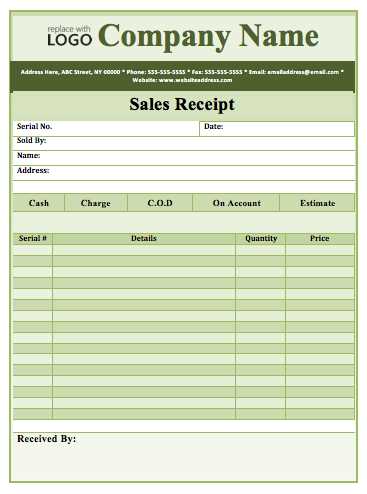
Clearly state whether the caravan comes with a warranty or is sold as-is with no warranty. This helps both the seller and the buyer avoid misunderstandings regarding liability and service after the sale. A warranty clause should outline the specific coverage, duration, and any exclusions. If the caravan is sold with no warranty, make sure to specify that no repairs or replacements will be covered post-sale.
Warranty Clause Example
“The seller provides a limited warranty covering defects in materials and workmanship for 12 months from the date of purchase. This warranty does not cover damage caused by misuse, accidents, or neglect.”
No-Warranty Clause Example
“The caravan is sold ‘as-is’ with no warranty. The buyer accepts full responsibility for any repairs or maintenance required after the sale.”
Calculating the Total Price and Tax Implications
To calculate the total price of a caravan sale, begin by adding the sale price of the caravan to any additional fees, such as delivery charges or optional extras. These should be clearly listed on the receipt.
| Item | Price |
|---|---|
| Base Price | $15,000 |
| Delivery Charge | $300 |
| Optional Extras | $500 |
| Total before Tax | $15,800 |
Next, calculate the sales tax based on the applicable rate in your area. For example, if the tax rate is 8%, the calculation will be:
| Tax Rate | Amount |
|---|---|
| 8% | $1,264 |
Finally, add the sales tax to the total price before tax to get the final amount the customer will need to pay. The final total will be:
| Final Total | Amount |
|---|---|
| Total with Tax | $17,064 |
Make sure to clearly list the sales tax separately on the receipt for transparency and ease of understanding. Additionally, verify if any tax exemptions apply to the sale, especially for certain types of customers or in different jurisdictions. Properly handling taxes ensures compliance with local regulations and prevents any issues with the transaction.
Ensuring Proper Signatures for Legal Validity
Make sure both parties sign the sales receipt to ensure its legal validity. Signatures confirm agreement to the terms of the sale and help prevent disputes. Without signatures, the document may lack enforceability in legal settings.
- Verify that the signatures are clear and legible, as unreadable signatures may be questioned in court.
- If possible, have a witness sign the document to further authenticate the transaction.
- Ensure both parties receive a signed copy of the receipt for their records. This serves as evidence of the sale.
When dealing with a caravan sale, double-check that the signature includes the date of the transaction. This is necessary for keeping accurate records of when the agreement was made. Always provide a place for both buyer and seller to sign, including any required titles or designations if applicable.
- Use printed names under signatures to eliminate any confusion about who signed.
- Ensure that signatures are dated to protect against future disputes regarding the timeline of the sale.
For enhanced protection, you may consider having the receipt notarized. While not always required, notarization adds an additional layer of legitimacy, particularly for high-value transactions such as a caravan sale.

